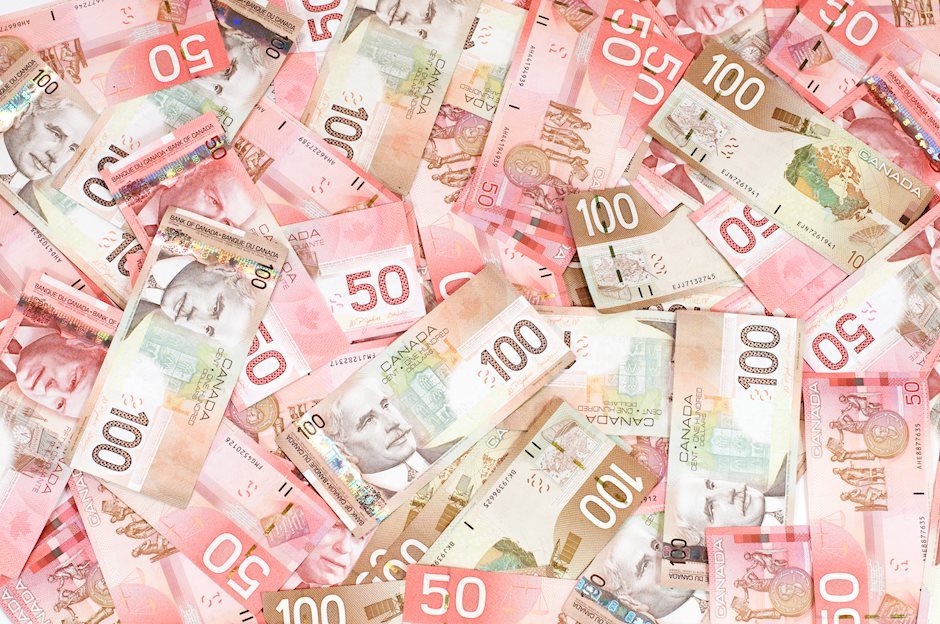USD/CAD edges lower near 1.3550 despite firm US Dollar
- USD/CAD falls to near 1.3550 even though the US Dollar gains ground.
- Traders are divided over the Fed’s likely interest rate cut size in November.
- Investors await the BoC Macklem’s speech for fresh interest rate guidance.

The USD/CAD pair falls slightly to near 1.3560 in Monday’s European session even though the US Dollar (USD) has bounced back strongly. The USD recovers sharply as traders are split over the Federal Reserve’s (Fed) likely monetary policy action in the November meeting.
The market sentiment appears to be asset-specific, as European currencies have faced selling pressure while Asian peers have outperformed. Also, S&P 500 futures have posted decent gains in European trading hours. The US Dollar Index (DXY), which tracks the Greenback’s value against six major currencies, climbs above 101.00.
According to the CME FedWatch tool, traders see an almost 50% chance for the Fed delivering a second straight interest rate cut of 50 basis points (bps) to 4.25%-4.50%.
On the contrary, the latest Reuters poll shows that the Fed will cut its interest rates by 25 bps in each of its monetary policy meetings in the remaining year.
In today’s session, investors will focus on the preliminary United States (US) S&P Global PMI data for September, which will be published at 13:45 GMT. The US Composite PMI is estimated to have grown slower due to fragile expansion in activities in the service sector, along with continuous contraction in the manufacturing sector activity.
On the Loonie front, the Canadian Dollar (CAD) will be influenced by the Bank of Canada’s (BoC) Governor Tiff Macklem's speech, which is scheduled for Tuesday. Tiff Macklem is expected to provide fresh guidance on how much the central bank will reduce interest rates by the year-end.
Canadian Dollar FAQs
The key factors driving the Canadian Dollar (CAD) are the level of interest rates set by the Bank of Canada (BoC), the price of Oil, Canada’s largest export, the health of its economy, inflation and the Trade Balance, which is the difference between the value of Canada’s exports versus its imports. Other factors include market sentiment – whether investors are taking on more risky assets (risk-on) or seeking safe-havens (risk-off) – with risk-on being CAD-positive. As its largest trading partner, the health of the US economy is also a key factor influencing the Canadian Dollar.
The Bank of Canada (BoC) has a significant influence on the Canadian Dollar by setting the level of interest rates that banks can lend to one another. This influences the level of interest rates for everyone. The main goal of the BoC is to maintain inflation at 1-3% by adjusting interest rates up or down. Relatively higher interest rates tend to be positive for the CAD. The Bank of Canada can also use quantitative easing and tightening to influence credit conditions, with the former CAD-negative and the latter CAD-positive.
The price of Oil is a key factor impacting the value of the Canadian Dollar. Petroleum is Canada’s biggest export, so Oil price tends to have an immediate impact on the CAD value. Generally, if Oil price rises CAD also goes up, as aggregate demand for the currency increases. The opposite is the case if the price of Oil falls. Higher Oil prices also tend to result in a greater likelihood of a positive Trade Balance, which is also supportive of the CAD.
While inflation had always traditionally been thought of as a negative factor for a currency since it lowers the value of money, the opposite has actually been the case in modern times with the relaxation of cross-border capital controls. Higher inflation tends to lead central banks to put up interest rates which attracts more capital inflows from global investors seeking a lucrative place to keep their money. This increases demand for the local currency, which in Canada’s case is the Canadian Dollar.
Macroeconomic data releases gauge the health of the economy and can have an impact on the Canadian Dollar. Indicators such as GDP, Manufacturing and Services PMIs, employment, and consumer sentiment surveys can all influence the direction of the CAD. A strong economy is good for the Canadian Dollar. Not only does it attract more foreign investment but it may encourage the Bank of Canada to put up interest rates, leading to a stronger currency. If economic data is weak, however, the CAD is likely to fall.
Author

Sagar Dua
FXStreet
Sagar Dua is associated with the financial markets from his college days. Along with pursuing post-graduation in Commerce in 2014, he started his markets training with chart analysis.

















